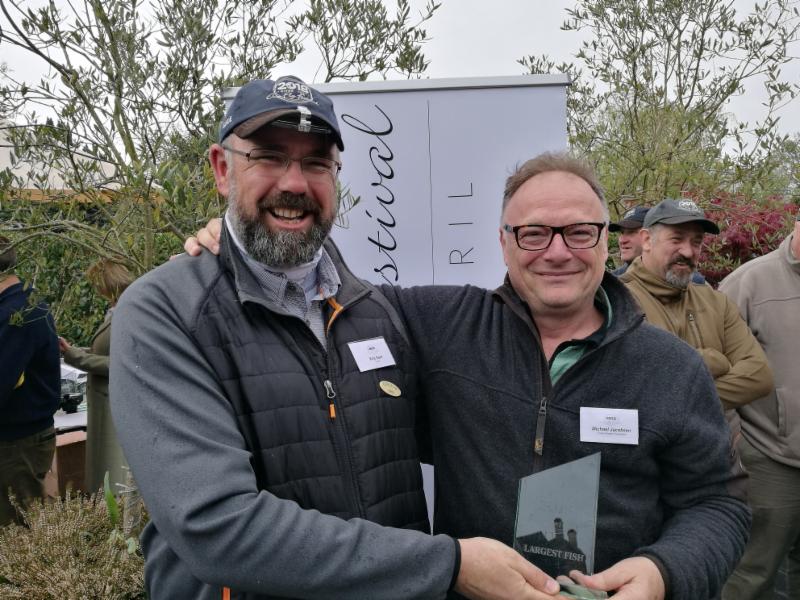Greetings!
There are
not many things that keep me awake at night but the draw for the One Fly does.
There was a time when it was all very relaxed. On the Saturday prior to the
competition we gather for the Guides briefing and way back when we started on
2008 we used to draw both the beats for the guides and the contestants. How we
would laugh and josh as the names came out of the hat, safe in the knowledge
that any snafu could be rectified away from public gaze
|
|
|
|
|
Jason Askey-Wood with his winning fly
|
Now in this age
of transparency (dreadful word) and in a bid to notch up the drama, it was
decided that we would hold the contestant draw on the morning of the One Fly
itself. Oh, how I live in fear of it going wrong. In 2016 I peered into the hat
to pull out the 36th and last name to see nothing. Looking up I saw
72 expectant faces eager for the starting gun. Piers Morgan's Stockbridge
Christmas lights disaster had nothing on this, though I am probably one of the
few to feel his pain. Back in the hat I ran my finger under the sweatband that
dislodged the final bit of paper. Crisis averted. This year, I am happy to say,
no such heart-stopping moments as the draw dodged the first of many heavy
showers that were to typify the day.
This wasn't
going to be an easy year. We have had a wet, wet winter and I haven't seen the
chalkstream aquifers pumping water this high and fast since the floods of
2013/14. In some respects it is actually more pronounced. Back in 2014 the
volumes were receding by April; this year they were still on an upward curve
though the peak is now past. So anyone on the lower beats would have to cope
with lots of water, fish still hiding out and in some cases poor clarity. But
that is the challenge of the One Fly; you draw your beat and you adapt
accordingly. And plenty adapted very well.
|
|
|
|
|
A well tied winning fly after 18 fish.
|
Top billing is
really shared by Jason Askey-Wood and Grant Harrower, though Jason shaded Grant
to the overall title by just 10 points, which is simply the difference of one
fish being one inch longer. Or in Grant's case hanging onto his fly (worth 75
points) which he lost with still ninety minutes to go. But hey, that's why we
call it the One Fly. Regardless it was a pretty amazing fishing day by both of
them with 41 fish between them, Jason with 18 on the River Kennet at Benham
Estate and Grant on The Greyhound beat catching 23. In all the three dozen
anglers caught 217 fish between them, all of which were released, with everyone
bar three catching at least one fish. The biggest fish of the day was by the
guide/fisher combo of Michael Jacobsen and Kris Kent who landed a monster
24" brown on the Orvis Ginger Beer beat at Kimbridge.
It was a great
day. We came. We fished. We got wet. And we marked the start of a new
chalkstream season, in the course of which we raised over £2,500 for the Alex
Lewis Trust. In ending I have to give special mention to the winning Guide Gary
Allen to accompanied Jason Askey- Wood, donating his £500 winning cheque to be
split equally between the Alex Lewis Trust and another cause close to the heart
of his family. Thank you Gary.
Stockbridge: shopping valhalla
Plenty of us who live within easy striking distance of Stockbridge
have concluded that with the ubiquity of internet shopping all our consumer
needs are now met online and by the occasional foray into the fly fishing
capital of Britain.
|
|
|
|
|
Elaine Sperber. I'm sorry, I made her do it
.........
|
I understand
those of you who live in more metropolitan parts might think of us, to use that
Del Boy term, as carrot crunchers but we are happy with our butcher, baker,
greengrocer, florist, post office, two chic delis, coffee shop, wine store, a
whisky shop on the way .... well, I won't go on but we jam a lot into one single,
and relatively short, High Street.
However, we have
been deficient in one important area: a bookshop. Amazon is all very well but
there is nothing like browsing the shelves, reading the back covers and
flicking through the virgin pages to unearth a new author or rediscover one you
had long forgotten. Well, I am delighted to say The
Bookmark now has to be added to my list above.
The shop has
been opened by Elaine Sperber, an American who long ago came to our shores and
lives in a village not so far away. For most of her professional life she was
in the TV and film business, Head of Drama for Children's BBC, where she
commissioned 53 series including hits Tracy Beaker and Stig of the Dump, with a
whole raft of other independent film and TV producer credits to her name.
After decades of
reading scripts and books for a profession Elaine has a massive fund in
literary knowledge and this is reflected in the diverse and fascinating books
she stocks. Give her your literary brief and in a flash she'll have a selection
that will open new reading doors. The Bookmark is handily located a few doors
down from Robjents and directly opposite Orvis.
The Feather Thief
I don't really like to cut and paste entire articles; it seems a
bit of a cheat. But below I have reproduced in full Maggie Fergusson's review
last week in The Spectator of the Kirk Wallace Johnson book The Feather Thief: Beauty, Obsession and the Natural History
Heist of the Century.
The truth is I
haven't had a chance to read the book, but even if I had I could not better the
Fergusson review. I suspect you, like me, as you read the piece will wonder
where it is all going but for anyone with an interest in fly fishing, and fly
tying in particular, it will suddenly hit you right between the eyes.
 "They don't look like
a natural pair. First there's the author, Kirk Wallace Johnson, a hero of
America's war in Iraq and a modern-day Schindler who, as USAID's only
Arabic-speaking American employee, arranged for hundreds of Iraqis to find safe
haven in the US. In the process, he developed PTSD, sleepwalked through a hotel
window, flung himself from a ledge and plunged, nearly, to his death. Then
there's the stranger-than-fiction Edwin Rist, a brilliant young flautist who,
on a pitch-black night nine years ago, in pursuit of an obsession with rare
bird feathers, risked years in jail in one of the most brazen and bizarre
museum heists ever accomplished. Yet Johnson and Rist are made for one another.
Within pages I was hooked. This is a weird and wonderful book.
"They don't look like
a natural pair. First there's the author, Kirk Wallace Johnson, a hero of
America's war in Iraq and a modern-day Schindler who, as USAID's only
Arabic-speaking American employee, arranged for hundreds of Iraqis to find safe
haven in the US. In the process, he developed PTSD, sleepwalked through a hotel
window, flung himself from a ledge and plunged, nearly, to his death. Then
there's the stranger-than-fiction Edwin Rist, a brilliant young flautist who,
on a pitch-black night nine years ago, in pursuit of an obsession with rare
bird feathers, risked years in jail in one of the most brazen and bizarre
museum heists ever accomplished. Yet Johnson and Rist are made for one another.
Within pages I was hooked. This is a weird and wonderful book.
On the evening
of 23 June 2009, Rist, then a 20-year-old Royal Academy of Music student who
hoped one day to play principal flute for the Berlin Philharmonic Orchestra,
performed in a concert of Haydn, Handel and Mendelssohn. Then, having taken his
bows, he gathered wire-cutters, an LED torch, latex gloves, a diamond-blade
glass cutter and what must have been a tardis of a wheely suitcase, and caught
a train to Tring in Hertfordshire. From the station, he walked to the Natural
History Museum, once the private repository of Walter Rothschild, the highly
eccentric second Lord Rothschild, who rode about in a carriage pulled by zebra.
Gifted to the nation in 1937, the museum is home to one of the finest
collections of stuffed mammals, ornithological specimens, reptiles and insects
in the UK.
Breaking a
window, Rist hoisted himself into the museum. He had originally planned to be
swift and selective, but as he began to fling open the white steel cabinets of
dead birds he was seduced into a kind of feeding frenzy. It would later be some
small comfort to the museum curators that Rist bypassed Darwin's sizeable
collection of finches, and the skins and skeletons of the Dodo and the Auk,
concentrating instead on birds that appeared more colourful and exotic: Resplendent
Quetzals, gathered in the 1880s from the Chiriqui cloud forests of western
Panama and nearly four feet in length; 14 skins of the Lovely Cotinga; 37
Purple-Breasted Cotinga; 21 Spangled Cotinga; 37 Birds of Paradise; 24
Magnificent Riflebirds; 12 Superb Birds of Paradise; four Blue Birds of
Paradise; 17 Flame Bowerbirds, and so on. When he finally dragged himself back
outside, there were 299 birds stuffed into his suitcase.
Many of the
birds Rist had stolen had been collected by one very remarkable man: Alfred
Russel Wallace, a self-taught naturalist from a humble background who, in the
mid-19th century, worked his way deep into the gloomy forests of the Malay
Archipelago, hunting down mammals, reptiles and birds, funding his expeditions
by selling off duplicate skins. He lived on a diet of alligator, monkey and
turtle, and was prey to malaria, vampire bats, serpents and pirates, all the
while collecting creatures of otherworldly beauty, many of which had thrived
undiscovered by human beings for more than 20 million years.
Killing birds
in pursuit of the study of natural history has, perhaps, some justification.
But in the wake of Wallace's discoveries came a late-Victorian rage for
incorporating them in women's fashion. In what became known as the Age of
Extermination, hundreds of millions of birds - parrots, toucans, quetzals,
snowy egrets, ospreys - were killed mainly, though not exclusively, to adorn
hats. One merchant peddled a shawl made from 8,000 hummingbird skins.
As the birds'
numbers dwindled, they became worth more than their weight in gold. When the
Titanic went down in 1912, the most valuable and highly insured commodity in
its hold was 40 crates of feathers. Not surprising, then, that when Rist
hurried back towards Tring station, he was carrying $1 million worth of
feathers. He had been in the museum three hours. The security guard, glued to a
football match, had failed to notice the alarm indicator blinking.
Johnson is a
master of pacing and suspense. We learn the details of Rist's crime at the very
beginning of the book, but for a good few chapters we are kept wondering
whether he'll be caught, and, if so, how; whether Johnson will get to meet him,
and whether he is now behind bars, or out free in the world playing his flute.
The other
burning question, of course, is what inspired such an outlandish crime. Edwin
Rist was brought up in Claverack, a small town north of New York City, and
home-schooled by parents who bred labradoodles for a living, and who devoted
themselves to nurturing enthusiasms in their two sons. Edwin was just 11 when
he caught by chance on television a demonstration of how to tie a fly for trout
fishing. He was instantly captivated - and very soon as preoccupied with
fly-tying as with his flute. He befriended a retired ornithology professor
willing to sell him bird skins on the cheap. A zookeeper at the Bronx Zoo sent
him feathers from the autumn moult of the Macaw, Spoonbill and Tragopan. He
took a job chopping logs to fund his new addiction, but the rarest, most
gorgeous feathers - and therefore the most elaborate flies - remained,
financially, out of his reach. Meantime, what had begun as a hobby had become
an obsession.
Over the
internet, Rist became part of a shady 'feather underground', a community of
(all-male) fanatics who had no interest whatsoever in fishing - 'People don't
actually fish with this shit, right?' one tells Johnson - but who would go to
almost any lengths to lay their hands on exotic feathers to tie flies. 'God,
Family, Feathers' was the motto of one, while another described fly-tying as
'like a drug, nothing else matters, nothing else compares'.
Rist's new
cronies were a disparate lot: a blacksmith, a retired detective, a dentist
(what is it with dentists and endangered creatures?). But they had in common a
breathtaking hubris: a belief that they could slice apart some of the most
beautiful creatures in the natural world, and put them back together to make
something more beautiful still. Dyed feathers just wouldn't do. 'The knowledge
of the falsity eats at you,' Rist tells Johnson when they finally meet for an
eight-hour hall-of-mirrors encounter during which Rist tries to persuade
Johnson that he is not a thief, and that by snatching the Tring birds he was
actually saving the lives of birds in the wild.
And how did
Johnson become so obsessed with Rist? As he struggled to overcome his PTSD, he
took up fly-fishing as a therapy. One day, as he stood waist-deep in a river in
northern New Mexico, his fishing guide told him of Rist's crime. Johnson knew
nothing of rare birds or salmon flies, and had no experience of tracking
thieves; but, like Rist himself, he became fixated - as tenacious in his
pursuit of truth and justice as any fly-tyer in pursuit of feathers. His
ambition: to find out whether it was really possible that Rist worked alone,
and to restore to Tring all 299 of the stolen birds.
There's no
great climax to this tale, but it's a tribute to Johnson's storytelling gifts
that when I turned the last page I felt bereft. The odd, but obvious, solution?
To seek out his first book, To Be a Friend is Fatal, a memoir of the Iraq
war."
The
Feather Thief: Beauty, Obsession and the Natural History Heist of the Century by Kirk Wallace Johnson
is published by Hutchinson. £20.
Quiz
More
chances to prove, or improve, your intellect. Answers, as ever, at the
bottom of the page.
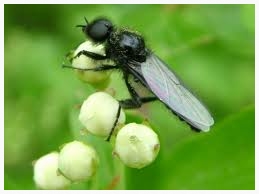 1) After which saint day on
April 25th is the Hawthorn fly sometimes known?
1) After which saint day on
April 25th is the Hawthorn fly sometimes known?
2) We have just celebrated
Beltane, the day halfway between spring and summer. When is it?
3) When were the first Bank
Holidays officially granted by law in the UK?
Have a great holiday
weekend!
Best wishes,
Founder & Managing Director
Quiz answers:
1) St
Mark's Day
2)
May 1st, May Day.
3)
The Bank Holidays Act 1871
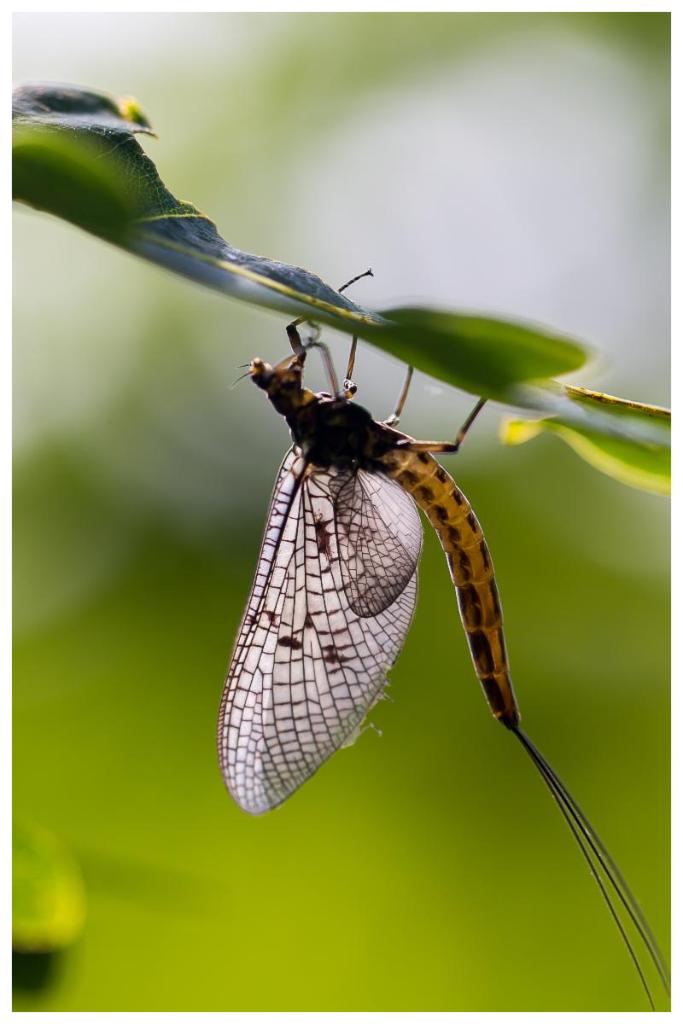 As you know I beseech the
rain Gods every winter and this year they listened; the rivers are fast and
full. It is not unalloyed good news, so sometimes you have to be careful what
you wish for. River keepers are mowing with strimmers not mowers having mired a
tractor or two in an unexpectedly wet patch of bank. The lower reaches don't
have the clarity we'd like and the brown trout, who are lazy at the best of
times, have been hiding on the bottom rather than swim against the flow. Many a
feedback form has used the word 'doggo' to describe their lack of feeding.
As you know I beseech the
rain Gods every winter and this year they listened; the rivers are fast and
full. It is not unalloyed good news, so sometimes you have to be careful what
you wish for. River keepers are mowing with strimmers not mowers having mired a
tractor or two in an unexpectedly wet patch of bank. The lower reaches don't
have the clarity we'd like and the brown trout, who are lazy at the best of
times, have been hiding on the bottom rather than swim against the flow. Many a
feedback form has used the word 'doggo' to describe their lack of feeding.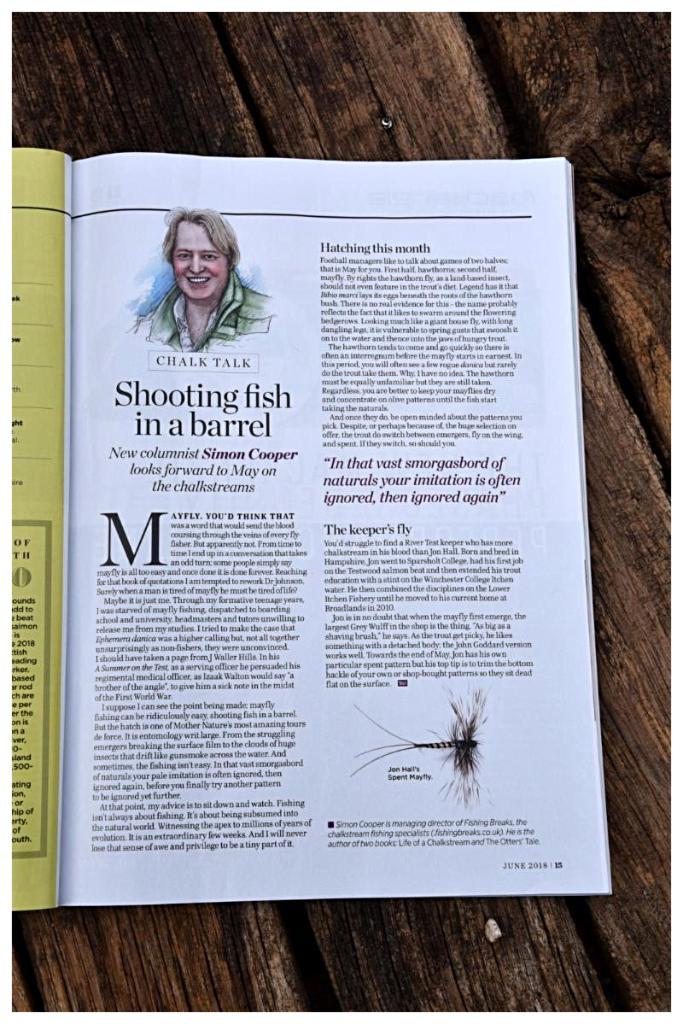


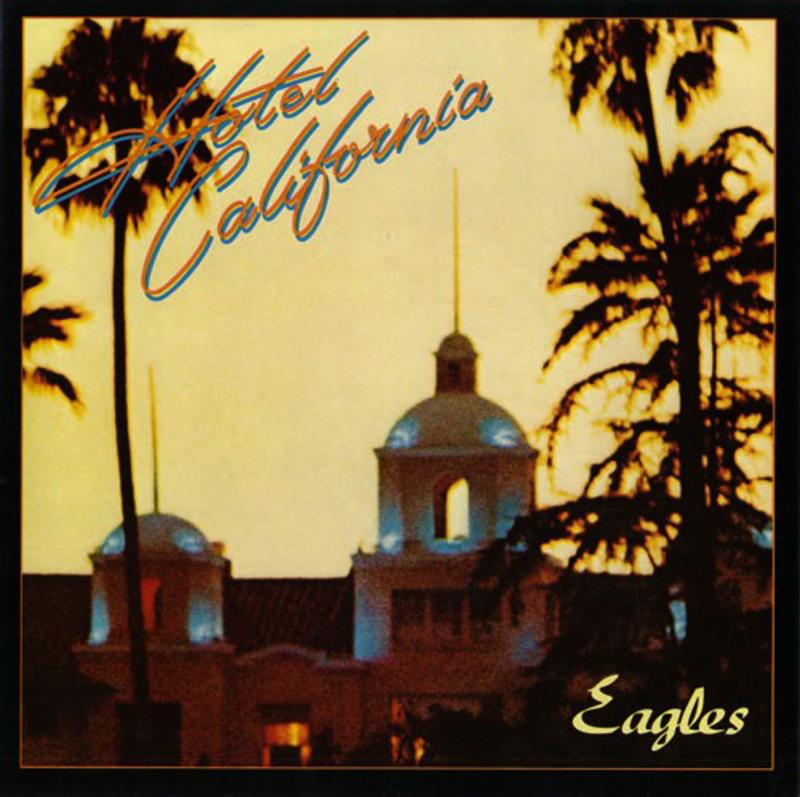 1) When was Trout &
Salmon magazine first published?
1) When was Trout &
Salmon magazine first published?


